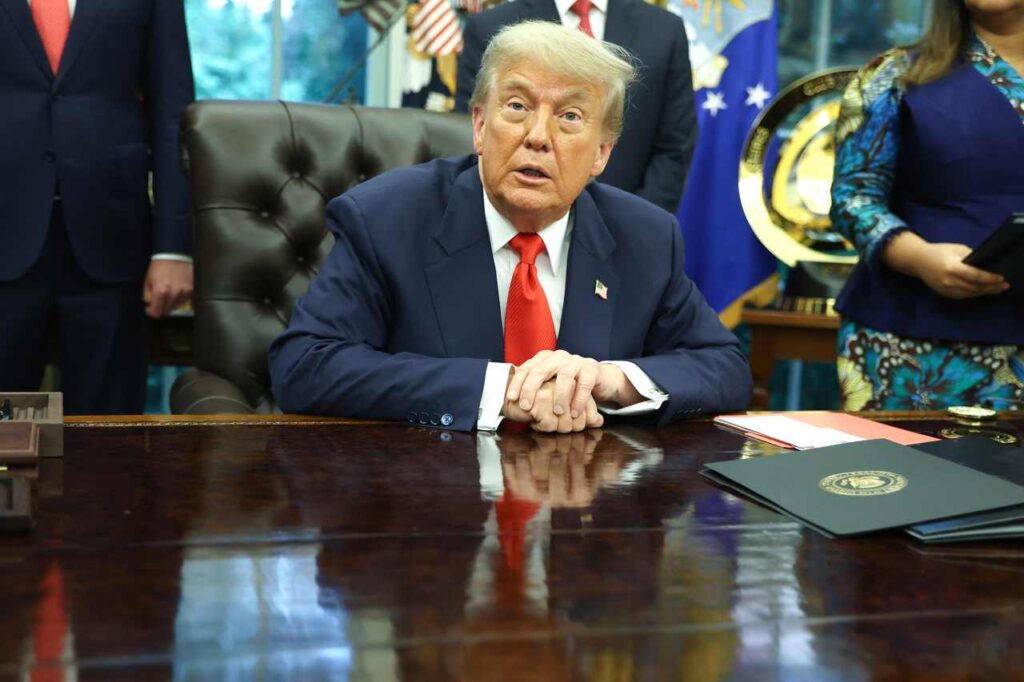
In a decisive move, former President Donald Trump has reiterated his firm stance on the July 9 trade deadline with Japan, indicating that a deal is unlikely to be reached. This announcement comes amid ongoing negotiations that have seen little progress, with both nations standing firm on their respective trade policies.
The trade talks, which have been a focal point of international economic discussions, are now at a critical juncture. Trump’s insistence on maintaining the deadline highlights the urgency with which the United States is approaching these negotiations. Meanwhile, Japan has expressed a desire for more time to reach a mutually beneficial agreement.
Background and Context
The trade negotiations between the United States and Japan have been ongoing for several months, with both sides seeking to address key issues such as tariffs, market access, and regulatory standards. The talks are part of a broader strategy by the U.S. to recalibrate its trade relationships globally, a hallmark of Trump’s economic policy during his presidency.
Historically, U.S.-Japan trade relations have been complex, often characterized by disputes over automotive and agricultural products. The current negotiations are no exception, with these sectors once again at the forefront. Japan, a major exporter of automobiles to the U.S., is particularly concerned about potential tariff increases that could affect its industry.
Expert Opinions and Analysis
Trade experts have weighed in on the implications of Trump’s firm deadline. According to Dr. Susan Thompson, a trade policy analyst, “The July 9 deadline is a strategic move by the U.S. to pressure Japan into making concessions. However, this approach may backfire if Japan decides to hold its ground.”
Another expert, Michael Lee, a former trade negotiator, noted, “Japan has historically been a tough negotiator. They are unlikely to yield easily, especially under tight deadlines. This could result in a prolonged stalemate.”
“Japan has historically been a tough negotiator. They are unlikely to yield easily, especially under tight deadlines.” — Michael Lee, former trade negotiator
Historical Parallels
The current trade tensions echo past negotiations between the two countries. In the 1980s and 1990s, the U.S. and Japan engaged in intense trade talks that often resulted in temporary agreements but failed to address underlying issues. The automotive sector was a significant point of contention then, as it is now.
During those decades, the U.S. imposed voluntary export restraints on Japanese cars, a move that temporarily eased tensions but did not resolve the core disagreements. The lessons from these historical episodes suggest that while deadlines can create urgency, they do not guarantee resolution.
Implications and Future Outlook
The firm stance by Trump on the trade deadline with Japan could have significant implications for both economies. For the U.S., failing to reach a deal could mean missed opportunities for American exporters seeking greater access to Japanese markets. Conversely, Japan faces the risk of increased tariffs on its exports, which could impact its economic growth.
Looking ahead, the outcome of these negotiations will likely influence U.S. trade policy with other nations, particularly in Asia. If a deal is not reached by the deadline, it could set a precedent for future trade talks, potentially leading to more rigid timelines and heightened tensions.
As the deadline approaches, all eyes will be on the negotiators from both countries to see if they can bridge their differences. The world is watching closely, as the outcome will not only affect bilateral relations but also have broader implications for global trade dynamics.





